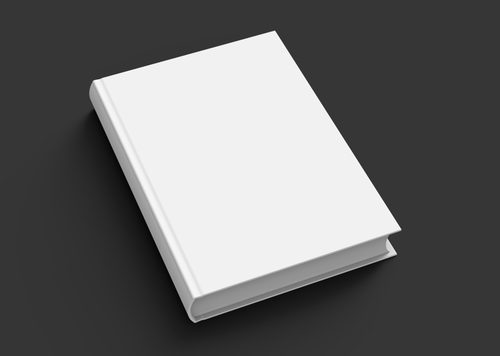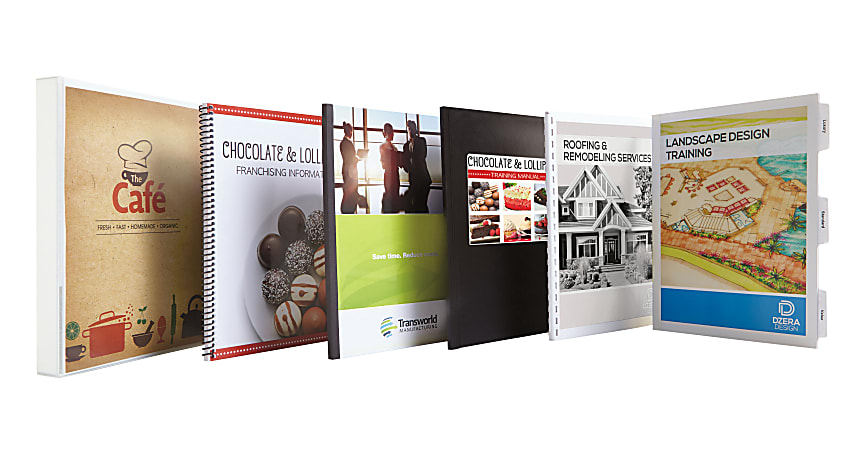Hardcover Books for Teens and Young Readers
Hardcover Books for Teens and Young Readers
Blog Article
A Comprehensive Guide to the Process of Hardbound Books Printing
When you start the trip of hardcover publication printing, understanding the whole process is vital. As you navigate through binding and high quality control, you'll locate that every decision affects the publication's total appeal.
Understanding the Hardcover Publication Structure
When you discover the world of hardcover books, you'll swiftly discover that their framework is distinct and deliberate. You'll find a fabric or natural leather covering, which not just boosts aesthetics yet also adds to the publication's long life.
The text block itself consists of several signatures, or folded up sheets, sewn together for stamina. You'll see that the spine is strengthened, permitting a smooth lay-flat reading experience - hardcover books. Additionally, guide's weight usually shares a sense of quality and durability
Hardbound publications commonly feature a dirt jacket, which serves as an advertising tool while shielding the cover. Recognizing these elements helps you value the workmanship behind hardcover books and their one-of-a-kind allure in the literary world.
Manuscript Prep Work and Editing And Enhancing
Getting your manuscript ready for printing is necessary, and it starts with appropriate formatting standards. You'll need to comprehend the editing and enhancing process to improve your work and assure it resonates with viewers. And also, understanding proofreading methods can assist you capture those annoying errors before your publication mosts likely to print.

Manuscript Formatting Guidelines
Appropriate manuscript format is necessary for producing a professional-looking hardbound book. Begin by picking a conventional font like Times New Roman or Arial in 12-point size. Use double-spacing throughout the file to boost readability. Set your margins to 1 inch on all sides, providing your text area to take a breath. Number your web pages in the leading right edge, and include your phase titles at the start of each new section. Usage clear headings to suggest areas, and avoid too much format like strong or italics unless needed. See to it to proofread your manuscript for uniformity in vogue, making certain that every little thing from spelling to spacing complies with your selected guidelines. Following these actions will establish a solid structure for your publication.
Editing Process Essentials
Modifying your manuscript is a crucial step that can change it from a harsh draft into a sleek end product. Beginning by reviewing your job seriously, focusing on circulation, framework, and clearness. Seek variances in your story, personality growth, or argumentation. It's helpful to take breaks between rounds of editing and enhancing to acquire fresh perspectives. Do not wait to reduce unneeded material or rephrase uncomfortable sentences; this will boost readability. Consider looking for feedback from relied on peers or professional editors that can offer beneficial understandings. Keep in mind, editing and enhancing isn't almost repairing errors; it's regarding improving your voice and guaranteeing your message reverberates with visitors. Accept the procedure, and you'll see your manuscript sparkle.
Proofreading Methods Review
As soon as you've polished your manuscript via editing and enhancing, the next action is to assure it's complimentary of mistakes that can distract visitors. Begin by pausing after editing and enhancing; fresh eyes catch errors much better. Review your manuscript aloud-- this aids you listen to awkward wording and area typos. Use digital devices like spell checkers for first scans, but do not rely entirely on them. Think about printing your manuscript; analysis theoretically can disclose errors that displays miss out on. Focus on one kind of mistake at once, whether it's spelling or grammar, to prevent feeling overwhelmed. Employ a trusted pal or expert proofreader to provide a fresh viewpoint. Their responses can highlight issues you could forget.
Creating the Publication Cover and Interior
When you're creating your book cover and interior, you'll wish to concentrate on important style elements that record your target market's focus. Picking the right typography designs and thoroughly choosing shades and images can make all the distinction in sharing your book's style. Allow's discover just how these selections can raise your job and attract viewers.
Essential Design Elements
Producing a distinctive publication cover and a well-designed inside is essential for drawing in viewers and enhancing their experience. Beginning with the cover; it's your impression. Pick shades and photos that mirror your book's theme and state of mind. Ensure your title stands out and is understandable, even in thumbnail size.
For the inside, emphasis on layout and white space. A clean, orderly layout aids viewers navigate easily. Think about utilizing chapter headings and subheadings to direct them through the material. Visual components, like pictures or graphics, can likewise enhance involvement however needs to match the text, not bewilder it. Bear in mind, a natural layout throughout your book cultivates an expert look that can considerably influence a viewers's decision to choose it up.
Choosing Typography Styles
Typography plays a crucial function in both the book cover and interior decoration, shaping how readers regard your material. When choosing typography styles, consider your publication's genre and target market. A timeless serif font style may work well for literary fiction, while a contemporary sans-serif may match a modern book. Guarantee readability; your message should be easy on the eyes, specifically for longer flows. Focus on font dimension and line spacing, as these elements affect overall circulation. Blending typefaces can add rate of interest, yet limit it to 2 or three to maintain coherence. Think regarding pecking order-- use different designs for headings and body message to assist visitors effortlessly through your job. Your typography selections will greatly impact the visitor's experience.
Color and Images Selection
Selecting the appropriate shades and images is vital for capturing visitors' attention and communicating your publication's motifs. Begin by considering your genre; vivid colors might work for a kids's publication, while low-key tones suit a secret novel. hardcover books. Use imagery that resonates with your web content-- photos, images, or abstract styles can improve your message
Assume concerning the emotions you intend to stimulate. Cozy colors can create excitement, while cool shades often communicate peace. When designing the cover, make sure the images does not overwhelm the title and writer's name; clarity is key. Inside, make use of constant color design that match your typography. This cohesive approach not only Home Page elevates your publication's aesthetic yet additionally enriches the viewers's experience, making it much more unforgettable.
Picking the Right Paper and Materials
When selecting paper and materials for your hardcover publication, it's necessary to consider how they'll impact the general feel and look of your project. Start by selecting the ideal paper weight; heavier supply frequently shares quality and durability, while lighter paper can produce see this page a much more delicate touch. Think about the surface as well; glossy paper enhances shades and pictures, while matte can give an innovative, understated appearance.
Cloth, natural leather, or published paper can set the tone for your book. Furthermore, believe concerning the binding products; using premium adhesive assurances your book lasts.
Inevitably, the selections you make right here mirror your vision, so make the effort to sample various materials (hardcover books). Your choices will assist create a publication that's not just visually appealing however practical and additionally sturdy
The Printing Process: Strategies and Technologies
A selection of printing methods and technologies can bring your hardcover publication to life, each offering one-of-a-kind advantages. Digital printing is a popular choice for brief runs, permitting for quick turnaround and cost-effective options.
For special results, you might consider methods like aluminum foil marking or embossing, which can add a luxurious touch to your cover. In addition, you can choose for different inks, consisting of environment-friendly choices that satisfy environmentally mindful viewers. Comprehending these methods helps you make educated decisions, ensuring your hardcover book not just looks fantastic however also fulfills your manufacturing needs effectively. Select the appropriate technique to raise your book's allure and effect.
Binding Methods for Hardbound Books
Numerous binding methods can change your hardbound publication into a sturdy and attractive item. Another approach is the perfect binding, which makes use of adhesive to hold the pages with each other, enabling for a smooth spine yet much less resilience contrasted to situation binding.
You might also think about spiral binding, which enables your book to lay level, making it ideal for workbooks or manuals. It does not provide the very same safety cover as case binding. Ultimately, there's the saddle stitch technique, appropriate for smaller books, where sheets are folded and stapled with each other. Each binding method has its benefits and fits various requirements, so consider your publication's objective and target market when selecting the most effective choice for your job.
Top Quality Control and Final Touches
After choosing the right binding technique for your hardbound publication, high quality control becomes important to validate your end product fulfills your assumptions. Start by inspecting the published pages for any mistakes or variances in shade and layout. You don't desire to miss out on any kind of typos or misprints that might influence your visitors' experience.
Following, inspect the binding stability. Confirm the pages are securely affixed which the spinal column is strong. A well-bound book not just looks specialist yet also really feels sturdy in your hands.
Furthermore, take notice of the cover. Look for any scuff marks or imbalances in the art work. Make sure they're applied constantly throughout all copies. if you her latest blog have actually opted for unique finishes like embossing or aluminum foil stamping.
Lastly, perform a thorough inspection of the whole set prior to relocating to circulation. This method, you can validate that every publication mirrors your high standards.
Regularly Asked Concerns
The length of time Does the Hardbound Book Printing Refine Normally Take?
What Is the Minimum Order Quantity for Hardbound Books?
The minimum order amount for hardcover books typically begin around 100 duplicates, but it can differ based on the printer. You need to get in touch with your selected printing solution for their details requirements and rates.

Can I Publish Hardbound Books in Custom-made Sizes?
Yes, you can publish hardcover publications in personalized dimensions. Numerous printing services supply flexibility with dimensions, permitting you to pick a format that matches your project. Simply confirm the requirements prior to placing your order.
Are There Eco-Friendly Options for Hardcover Book Printing?
Yes, you can locate green alternatives for hardcover publication printing. Many business utilize lasting inks and recycled products. Simply ask your printer regarding their environment-friendly techniques to assure your task straightens with your environmental values.
What Are the Prices Related To Hardcover Publication Printing?
When taking into consideration hardcover book printing prices, you'll need to consider materials, layout, and printing methods. Added costs like shipping and binding can likewise impact your general budget plan, so plan appropriately for your task.
When you start the trip of hardbound book printing, comprehending the entire procedure is crucial.A selection of printing techniques and technologies can bring your hardcover book to life, each offering one-of-a-kind benefits. Exactly how Long Does the Hardcover Publication Printing Process Commonly Take?
The hardcover publication printing process normally takes about 2 to 6 weeks.Yes, you can find green choices for hardcover publication printing.
Report this page